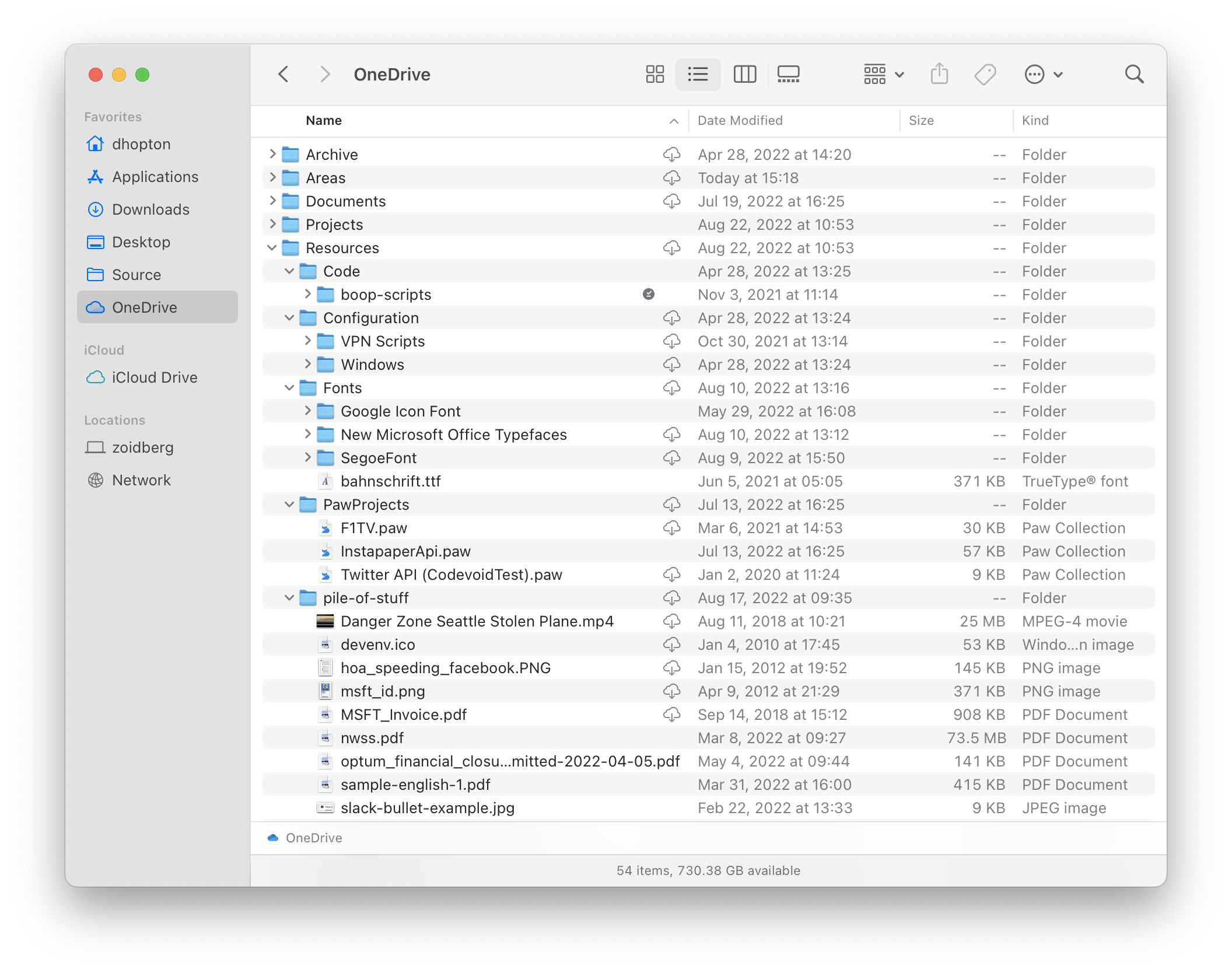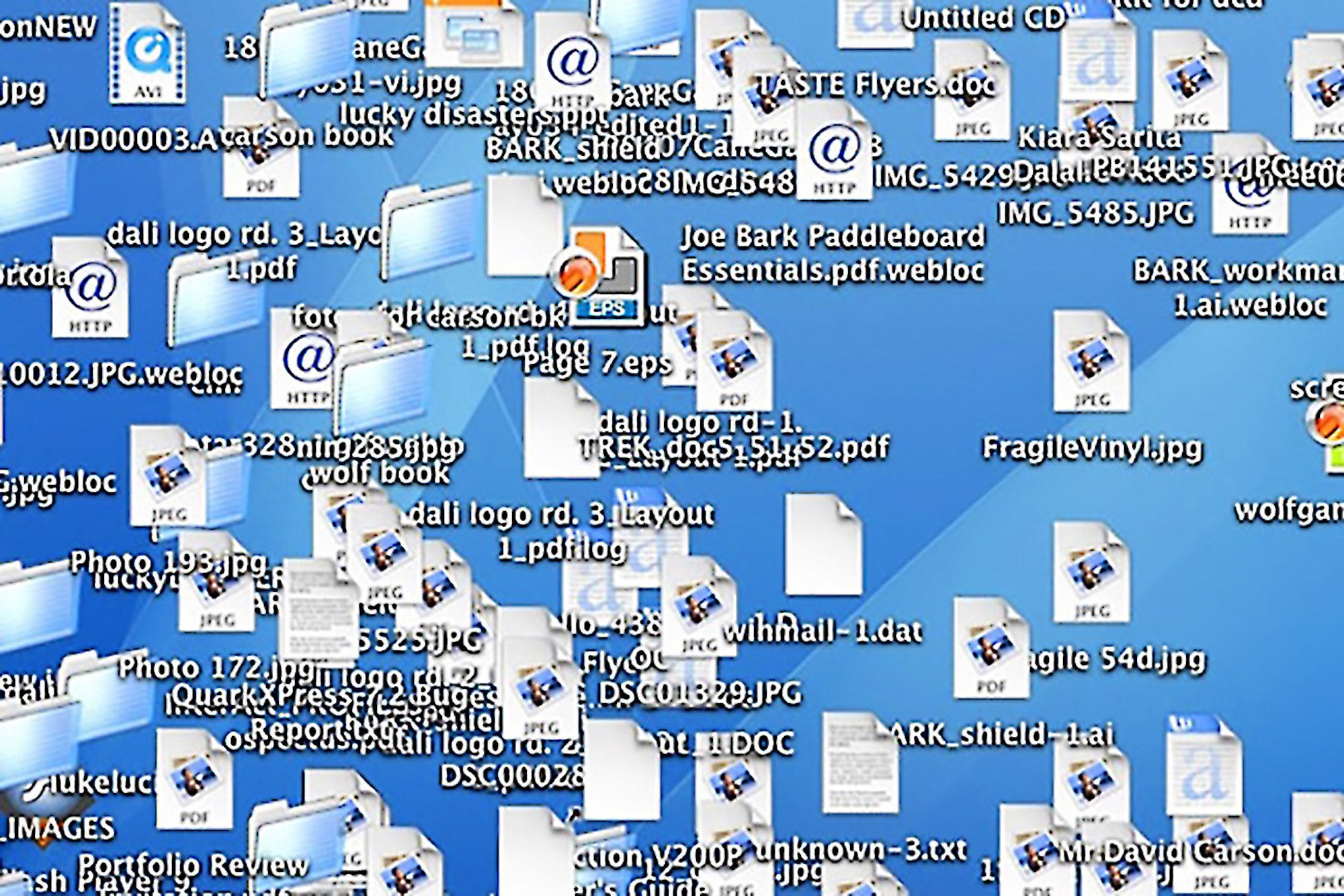Inspired by a comment by a friend that they don’t like ebooks because they’re hidden from physical view, thus not seeing their unread pile of books nagging at them relentlessly.
Digital collections are almost always presented in organised, structured, and curated experiences. Even the humble file browsing experience implicitly brings those things:
- Separated into visually aligned components (Icons, data lists, or ‘cover flow’)
- Sorted by some property of the contents
- Organised into some sort of structure or categories (containers within containers or attributes/tags applied to the files)
This makes their contents easy to find & easy to lose – depending if you can remember where you put the items you seek. It also makes it difficult to serendipitously encounter long lost items, because there is no ancillary pocket or shelf in which to stuff the item you just need to make sure you don’t lose track of.
Sure, with a dash of luck and a fair wind, an explicit search might help you rediscover that item that you’d collected many moons ago. Modern technology has improved chances of discovering a long-lost picture, where you were searching for some unrelated text (Thanks Machine Learning!).
Even if we’re lucky enough to bring together search across mediums with super AI to identify what those items are, you’re still deliberately search for something to achieve some other goal. Nothing comes close to the serendipity of your haphazardly filed items around your living space.
Consider tsundoku:
Acquiring reading materials, but letting them pile up in one’s home without reading them
Often people don’t buy books with a transactional view to their consumption – buy it, read it, throw it away. They collect them in small numbers and pick them up to read when they’re ready. The same applies to music – you’d have your small stack of CDs you’d purchased recently and listen to them before filing them into your beautiful CD rack.
Yes yes yes, I know some people use their computers digital desktop as a dumping ground, and a viewport into ones soul, even then rarely helpful to serendipitous discovery, since you rarely see it, and it’s orderly disorganised (Sorted by some property that is ultimately irrelevant).
In the physical world, we do have structure & organisation – but it is not all encompassing, and we use spatial aspects to make sure things are implicitly in the right place at the right time.
Augmented Reality (AR) gives an opportunity to take our digital experiences – files, pictures, applications, widgets, videos, games, et al – bring them into this serendipitous arena.
This isn’t just:
Recipes are in the kitchen. Videos are in the living room. Calming music in the bedroom, and focus music at my desk
Sure, this is a valuable capability, but you’re still left to an on-task discovery of items. You’re presented with recipes when you have already decided you’re going to cook. What about when you’re in the kitchen, gazing out upon the world in a brief period of niksen? Your gaze happens upon the recipe you pinned to the fridge from your Uncle Giovani. Or you just flipped open the cookbook while you were waiting for the kettle to boil, and you decided to give it a shot next week.
Allowing you to explicitly place items within AR space will allow us to recapture serendipity. We can clutter our lives infinitely, while also being free from the physical constraints of that clutter. You’ll be able to clutter like you’ve never cluttered before, but in an instant, you’ll be able to hide it, sort it, or restore it. You’ll – with sufficiently capable software – be able to take it with you, and have that serendipity be contextualise wherever you are.
The future ARverse doesn’t need to focus on increased productivity, intense & immersive entertainment, or digital asset creation. It can be about serendipity, and rediscovery. We can move through the augmented life, leaving little easter eggs & serendipitous diversions for our future selves to stumble across when they least expect it.


